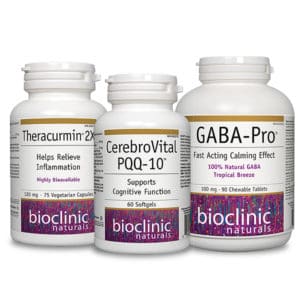Quality goes hand in hand with Bioclinic Naturals.
Our unremitting commitment to quality – from raw materials through clinical testing – means that our products are pure, potent and effective, to earn and deserve the trust of clinicians and their patients.

Raw Materials Testing
This test determines the percentage of purity of a raw material. It is either performed by High Performance Liquid Chromatography (HPLC) or titration. HPLC uses a standard of known purity, provided by the USP, and gives a result by comparing the raw material to a standard calibration curve. Titration is a process by which the compound to be measured is reacted with a standard solution and quantified accordingly.
The same methods are used as in raw material testing, only the product may require multiple potency tests for each vitamin, depending on the formulation. In the case of a multivitamin, up to 12 potency tests may be conducted.
This test can be performed by matching the absorption spectrum of a compound to the spectrum of a known pure standard. Each compound has a unique, characteristic pattern of absorption over a range of light wavelengths. Another way to identify a compound is by a simple chemical test. A chemical test usually involves a colour change or the formation of a precipitate (solid) when particular reagents are added.
These tests are performed using the same methods as used for the raw materials.
This testing is conducted to demonstrate that the content of metallic impurities does not exceed any trace heavy metals limit.
Any presence of trace amounts of arsenic can be found with this testing.
This test determines the amount of moisture in a sample.
Some raw materials may contain volatile compounds that are only driven off at extremely high temperatures. This test determines the percentage of material that is volatilized and driven off at approximately 800 °C.
This test determines the percentage of material that is inorganic and non-combustible.
Once the raw material has passed all necessary tests, it is released by the Quality Control department for use in production.
Production and Post-Production Testing
The manufacturing department must meet or exceed its own set of quality control requirements. Finished products are tested for weight variation and hardness throughout the production run. These tests ensure that every run, and every batch, is consistent from beginning to end.


Finished Product Testing
Once manufacturing is complete, the Quality Control department samples each product and sends it to the lab for more testing. Finished products are tested for:
The same methods are used as in raw material testing, only the product may require multiple potency tests for each vitamin, depending on the formulation. In the case of a multivitamin, up to 12 potency tests may be conducted.
These tests are performed using the same methods as used for the raw materials.
Using a representative sample of the finished product (20 tablets or capsules), the weights are recorded and the average is obtained. The weight variation from the average may not exceed 5% for tablets and 10% for capsules.
Using a USP-compliant disintegration apparatus, meant to simulate the movement of the human stomach, we determine the time for a representative sample to disintegrate. In general, for tablets and capsules they must disintegrate within 30 minutes in water medium. For more complex formulas disintegration within 45 minutes within a water or simulated gastric medium is acceptable. Extended release tablets/capsules are tested to withstand the simulated gastric medium and disintegrate in simulated intestinal fluid. This is a summary and for exact requirements USP method should be referred to.
This test involves determining the potency of 10 individual tablets or capsules to determine the uniformity of dosage units. The Relative Standard Deviation of the potency results may not exceed the USP limit of 6%.
Micro testing is performed using USP methods. It is intended to protect consumers from deadly pathogens and demonstrate raw materials and finished products are in a sanitary manner. Common testing includes aerobic plate count, yeast, and mold, E. coli, Salmonella, and S. aureus.
